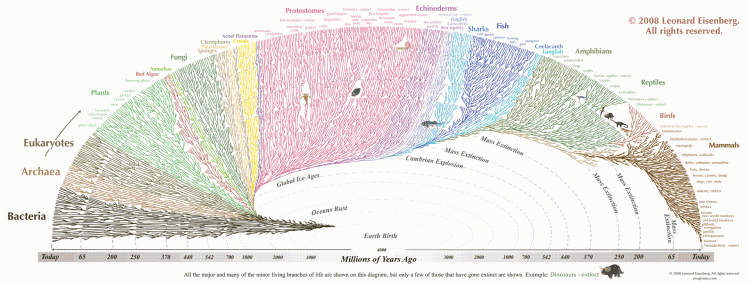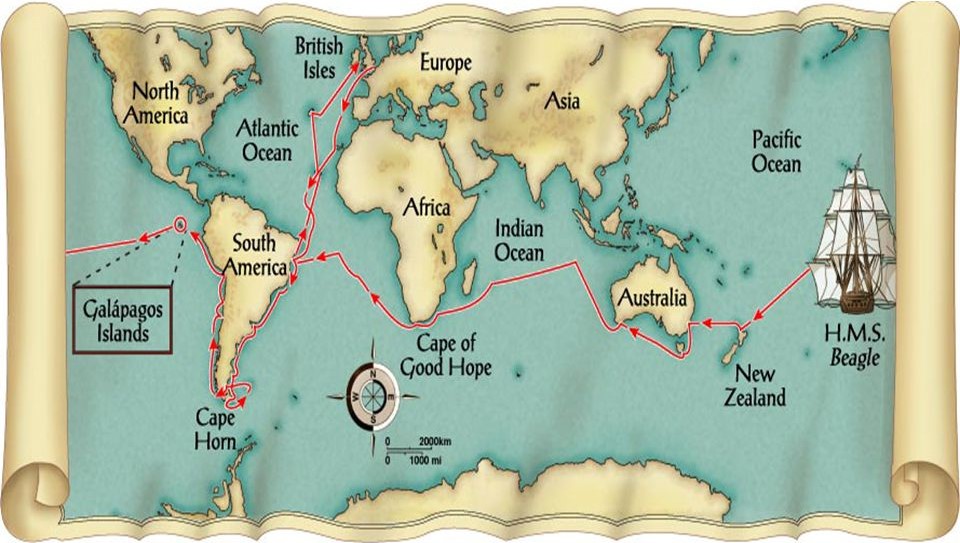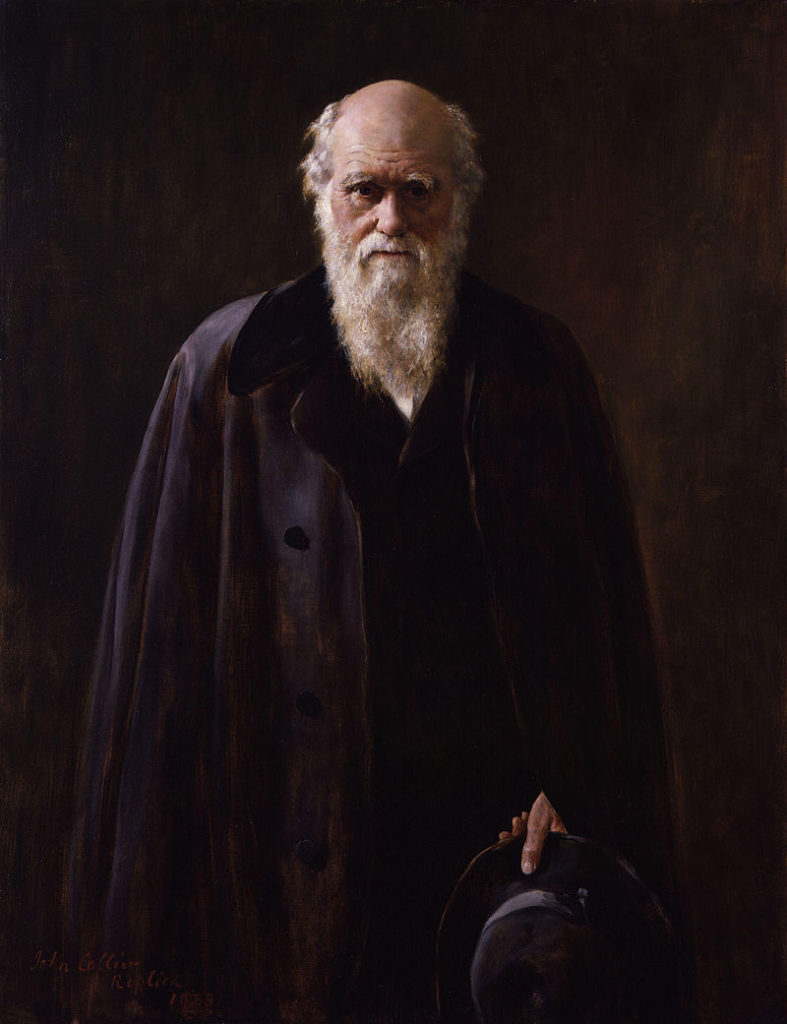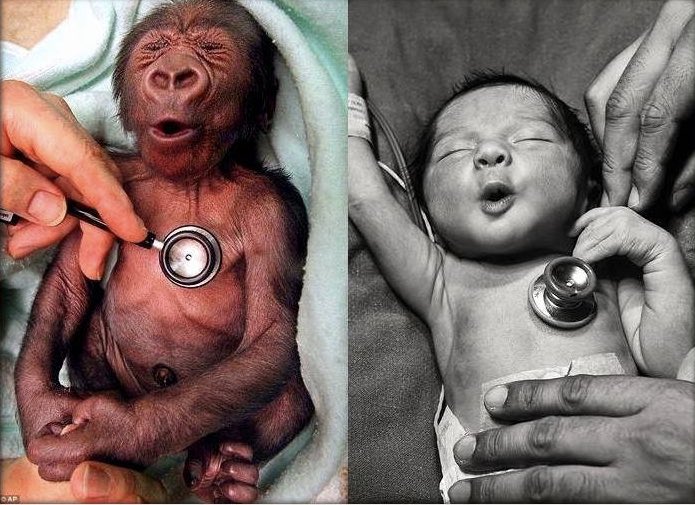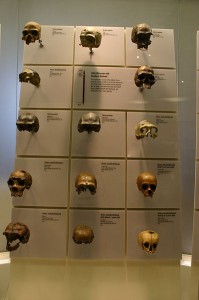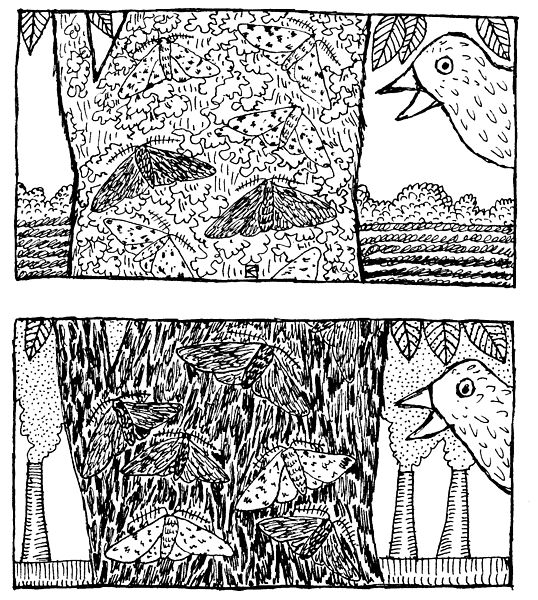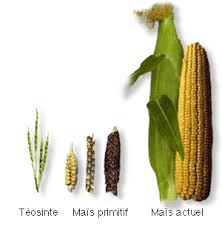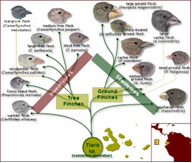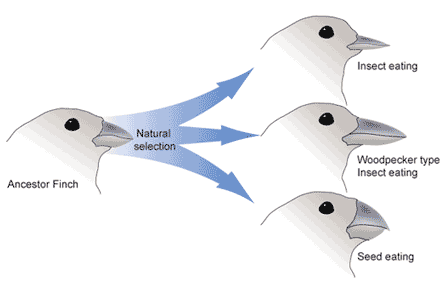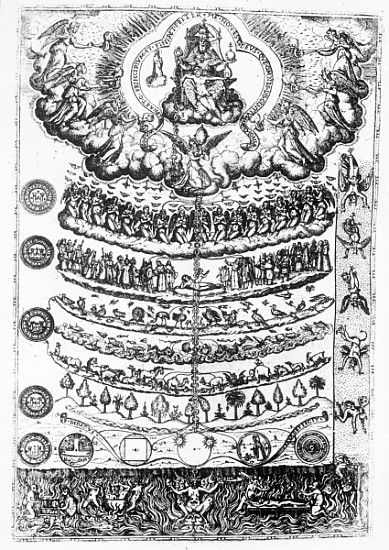In 1859 Charles Darwin published his landmark book On the Origin of Species by Means of Natural Selection, or the Preservation of Favoured Races in the Struggle for Life. This books marks the beginning over modern evolutionary biology. Darwin used the phrase “decent with modification” to describe the process of evolution.
The Evolution of the Idea of Evolution
Prior to Darwin the subject of evolution was subject to much speculation, uncertainty and debate. The idea that living organisms change over time was controversial for a variety of reasons. The idea is not self-evident because of the immensely long timescales required to make evolution happen. More controversial was its direct contradiction with the teachings of Christianity, where the Bible claims that God created species in their current from. However, by the 18th century some evidence began turning up in support of the idea that organisms have changed over time.
The Swedish botanist Carl Linnaeus developed a system for naming and classifying living organisms. His work provided some illuminating insights and a more comprehensive understanding into the relationships between different species.
In the early 19th century, the French naturalist Jean-Baptiste Lamarck proposed an early version of a theory of evolution. During this time the topic of evolution was of interest and debate among some naturalists. His theory centered on two main principles: on the law of use and disuse, and the inheritance of acquired characteristics. Lamarck’s theory, although not considered to be a valid mechanism for evolutionary change, was influential in shaping early evolutionary thought. His ideas sparked further interest, discussion and debate on the topic.
The Development of Darwin’s Idea
Charles Darwin developed his theory of evolution by natural selection over the course of many years through careful observation, research and study. Darwin had his first insight into evolution on his famous Voyage on the HSM Beatle from the years 1831-1836. During this voyage he collected a huge number of specimens made many important observations, especially in South America and the Galapagos Islands.
The Galapagos Islands provided the location from some of Darwin’s most crucial observations. While traveling to the different islands he noticed slight variations among similar species from one island to another. For example the shapes of the beaks of finches differed depending on their diet and environment. After returning home from his voyage, Darwin continued to reflect and do research while further developing his theory.
Darwin was also heavily influenced by Thomas Malthus, an British economist who wrote about population growth. Malthus proposed the populations tend to grow exponentially, while food production grows at a much slower rate, leading to competition and a struggle for survival. Darwin expanded on this idea, leading to his concept of natural selection. He spent over two decades refining his ides before finally publishing his theory in “On the Origin of Species” in 1859.
The Origin of Species: Darwin’s Theory of Evolution by Natural Selection
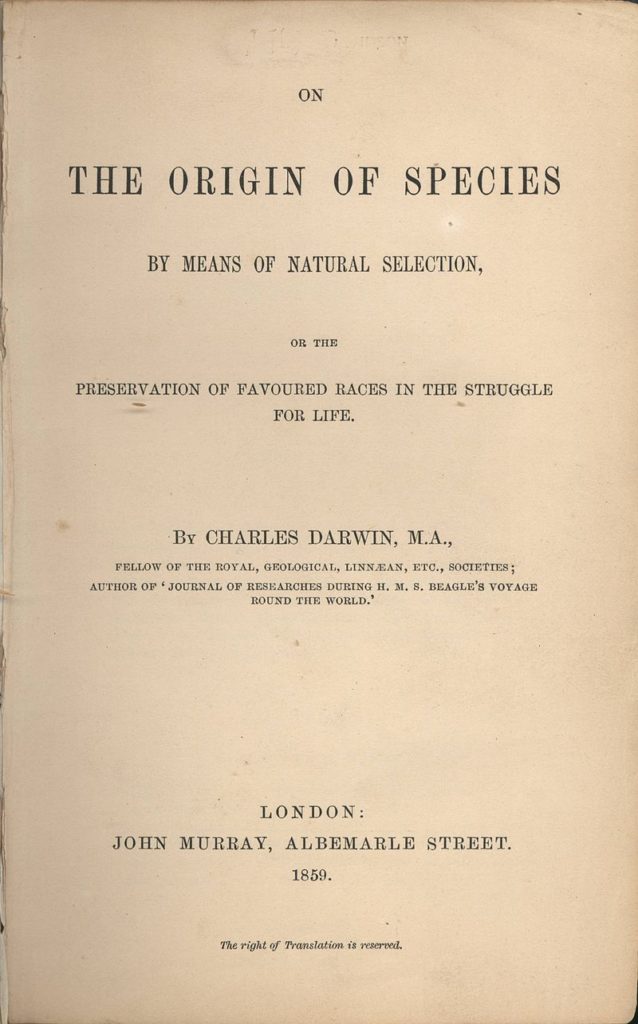
Darwin’s book begins with the topic variation under domestication, or what some call artificial selection. While the natural environment or habitat of a species selects which traits most help an organism survive and reproduce humans have the ability to select for specific traits in domesticated plants and animals. Gradual changes, such as selecting for speed in an English racehorse, accumulate over time and produce noticeable differences from the older ancestors. Darwin makes clear early on that heredity is key in explaining variation.
The book then progresses into a discussion on natural selection. He talks on the idea the struggle for existence and the limits to population increase as forces pressuring species. He credits Thomas Malthus for his contributions to this idea. He explains his main principle of evolution by natural selection which can be summed up as the cumulative adaptation to environmental pressures. Very gradually, over long stretches of time, species become more and more adapted to the environment in which they live.
Darwin provides a preponderance of evidence for his theory. He uses Charles Lyell’s work on geology to show similarities between uniformitarianism and biological evolution. He links classification schemes to his idea of decent with modification. He talks about “rudimentary organs” or vestiges, organs left over which no longer have any function. He shows how the geographical distribution of plants and animals falls into a pattern that supports his theory. It is because of his careful collection of evidence that his work became so popular and his idea’s so quickly accepted. To this day, Darwin’s Theory of Evolution is considered the cornerstone of biology and essential to understanding the diversity of life on this planet.
Continue reading more about the exciting history of science!
